How to Control Oriental Cockroaches in the Fall
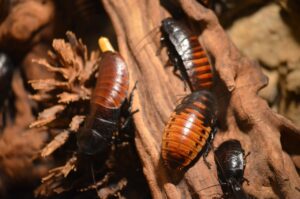
The Oriental cockroach is a common household pest that’s active year-round, especially during the spring and summer months. These roaches are typically nocturnal remaining hidden during daytime. If by chance they are spotted during the day, may be because of several reasons, for example, a shortage of food, their hiding places may have been disturbed, or overcrowding. Oriental cockroaches are sometimes commonly called water bugs or black beetles. Like other roach species, the oriental cockroach can become a nuisance especially if there is an infestation.
These roaches will contaminate food items and spread bacteria as they forage for food, moving over surfaces within the home. Their feces and shed skin can become a major health issue for people with asthma or allergies. Therefore, it is of the utmost importance to control their population.
Oriental Cockroaches Habitat
Oriental cockroaches can be found outdoors in warm weather hiding in leaf litter, debris, beneath stones, or mulch in landscaping plant beds and unkept garbage storage areas. They can be found in large numbers in sewers and storm drains. Once indoors, these pests will locate damp, cool places.
Note: If Oriental cockroaches are controlled outdoors there may be no need to control them indoors. Because control measures outdoors should lessen the chance of them getting indoors.
How to Identify Oriental Cockroaches
To identify the Oriental cockroach here is what to look for.
- Their colors range from shiny, dark reddish-brown-black.
- They can range in size from 1- 1 ¼”.
- The Oriental cockroach has 6 legs and a pair of antennae.
Signs of Oriental Cockroaches
Here are some signs to determine if you have an Oriental cockroach issue.
- Seeing them, especially during the warmer months.
- A foul musty odor, this odor which is a chemical is produced by the roach to communicate with each other.
- Coming across egg capsules, each case or capsule ranges in size from 8 to 10 mm in length if there is an infestation. Their egg cases are usually dark brown or reddish, each of the egg cases can hold up to about 16 eggs.
- Look for their droppings which resemble black pepper or dark irregularly shaped specks. The droppings of the Oriental cockroach can be found in areas where they are hiding or feeding.
Where to Look for Oriental Cockroaches Indoors
To locate Oriental cockroaches scout these areas.
- Under sinks
- Floor drains
- Crawl spaces
- Around washing machines
- Damp basements
How do Oriental Cockroaches get Indoors?
For Oriental cockroaches like rodents and other pests to enter indoors, they must find an entry point, ensure that these entry points are properly repaired to discourage their presence indoors.
- Through cracks and crevices within the home foundation.
- Through doors that are allowed to remain open.
- Opening where electrical pipes and plumbing enter the home or building structure.
- Beneath the door’s thresholds.
- Cracks or small openings around windows.
- Damage window screens that need repair.
- Open drains or sewers that lead into a home or building structure.
- Hitchhiking in garden potted plants that are not properly inspected before bringing them indoors.
- Make sure that shrubby and other garden plants are not installed and growing near entry points for example doors through which the oriental cockroach can slip through quickly without being noticed.
- Make sure that the branches of trees and plants are not making contact with your home because roaches, rodents, and other pests can use branches of trees as bridges to get onto homes or building structures followed by seeking an entry point.
How to Control Oriental Cockroaches Outdoors
The first step to controlling or discouraging the presence of Oriental cockroaches indoors is to control them outdoors, There are several effective ways this can be done.
- Seal all entry points with caulk or other sealants, for example, cracks and crevices in your home or building structure.
- Repair window and door screens that are torn.
- Apply a residual insecticide 2-3 ft. up the foundation of the home or building structure and 2-3 ft. out to act as a barrier and around the perimeter of doors and windows.
- Install door sweeps if needed.
- Try to reduce the amount of mulch that is used especially around doorways because mulch that remains wet from frequent watering will contribute to consistent moisture buildup that will not only attract the Oriental cockroach but various pests.
- Make sure that your garbage storage area is always cleaned and sanitized.
- Wood piles should be stored of the ground.
- Remove any open containers outdoors that collect water which will encourage the presence of mosquitoes, rodents, and roaches.
- Remember to remove water from plant saucer once the water has completely drained from the plant pot.
- Leaf litter and other plant material can be placed in a compost bin or properly disposed of.
- Make sure that garden plant beds are clear of debris.
- Apply a granular insecticide around the base of your home, especially in areas where there is mulch or pine straw. Bifen L/P can be used, by following directions on the label according to the manufacturer’s directions.
- Insect baits like Intice Perimeter Bait or Invict Xpress Granular Bait can be used outdoors in turf areas or indoors. Oriental roaches, Firebrats, Silverfish, Ants, and Earwigs are attracted to the multiple food attractants. Follow the manufacturer’s directions on the label for the best results and safe use. Kids and pets should not have access where these baits are applied.
How to Control Oriental Cockroaches Indoors
Unfortunately if on inspection that Oriental cockroaches are discovered indoors here are steps to take to bring control.
- Because pests enter our homes for food, water, and shelter make sure and clean up all food particles wherever food is prepared and consumed especially your kitchen countertops, on the floor around your stove, fridge, and other kitchen appliances.
- Any openings that are around water pipes, doors, baseboards, and windows should be sealed with caulk.
- Indoor trash cans should be in good repair with tight-fitted lids.
- Stove tops should be cleaned of food particles and grease.
- Avoid leaving dirty dishes overnight wash them immediately once used.
- All foods especially dried food packages that are open should be stored in air-tight containers.
- Repair indoor leaky faucets and pipes.
- Mess screens can be used to cover vents, windows, and floor drains.
- Make sure that moist spaces are well-ventilated.
- Any container that collects water should be removed once the pipes are repaired.
- The basement should be free of leaks and moisture along with well-ventilation.
- A dehumidifier will reduce moisture in your home or attic.
- The use of a contact spray will eliminate roaches on contact.
Additional information
If for some reason you don’t want to DIY the project yourself you can always hired a professional pest control company to do the job for you.
10 Frequently Asked Questions (FAQs)
FAQ 1: What exactly are Oriental cockroaches?
Answer:
Oriental cockroaches, sometimes called “water bugs” or “black beetle cockroaches,” are dark, shiny insects that thrive in damp, cool places like basements, drains, and crawl spaces. They’re slower than other roaches but just as creepy and unwelcome in your home!
FAQ 2: Why do Oriental cockroaches come inside?
Answer:
They usually sneak in looking for moisture and food. If your home has leaky pipes, damp basements, or cluttered storage areas, you’re rolling out the welcome mat for these pests—especially during hot or dry weather.
FAQ 3: How do I know if I have an Oriental cockroach problem?
Answer:
Look for signs like foul odor, droppings (they look like black pepper), or the actual roaches—usually near drains, under appliances, or in dark corners. You might also spot their egg cases, which are dark brown and about the size of a grain of rice.
FAQ 4: What’s the fastest way to get rid of Oriental cockroaches?
Answer:
Start with a deep clean—especially in moist areas. Then use a mix of gel baits, sticky traps, and insecticidal dust like boric acid or diatomaceous earth in cracks and crevices. If the infestation is large, call in a professional exterminator to knock them out for good.
FAQ 5: Do Oriental cockroaches carry diseases?
Answer:
Yes, unfortunately. Like other roaches, Oriental cockroaches can spread bacteria and germs as they crawl across your counters, dishes, and food. They’re known to trigger allergies and asthma too, especially in kids and seniors.
FAQ 6: Are natural remedies effective against Oriental cockroaches?
Answer:
They can help! Try sprinkling food-grade diatomaceous earth around entry points or mixing essential oils like peppermint, eucalyptus, or tea tree with water and spraying it near baseboards and drains. These won’t kill roaches instantly but can help keep them away.
FAQ 7: Where do Oriental cockroaches hide during the day?
Answer:
They love dark, damp spots where they feel safe—think under sinks, behind toilets, inside floor drains, or underneath piles of wet leaves outside. Finding and treating these hiding spots is key to winning the battle.
FAQ 8: Can I prevent Oriental cockroaches from coming back?
Answer:
Absolutely! Fix leaks, seal cracks around doors and windows, keep drains clean and dry, and reduce clutter indoors and out. Also, store pet food and trash in sealed containers so there’s nothing to attract them.
FAQ 9: What should I avoid when dealing with Oriental cockroaches?
Answer:
Don’t just spray them and call it a day. Contact sprays might kill some, but they won’t reach the nest. And avoid using too many repellents near bait stations—if they sense danger, they might avoid the bait altogether.
FAQ 10: How long does it take to completely get rid of Oriental cockroaches?
Answer:
It depends on how bad the infestation is. With consistent cleaning and treatment, you might see big improvements within a week or two. For larger infestations, it could take a month or more—and sometimes a second round of treatment is needed.
Conclusion
Controlling Oriental roaches will take some work especially if the infestation is great but the good news is that an effective program will not only put these roaches on the run but will eliminate them. Why let Oriental cock roaches take over your home when you can strike back to enjoy a pest-free environment?

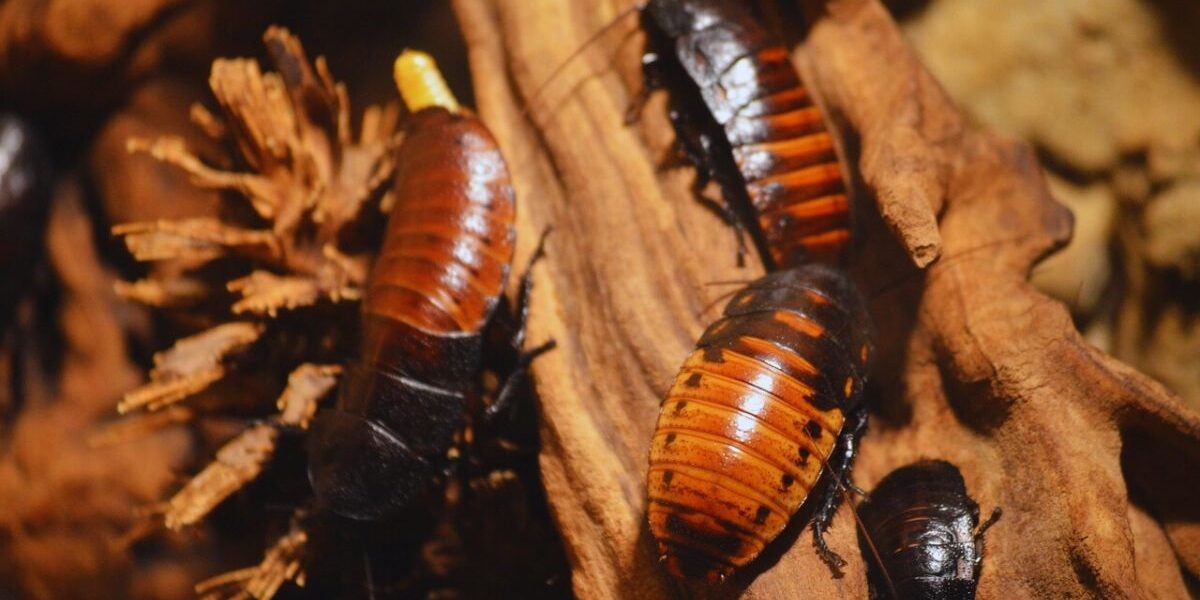

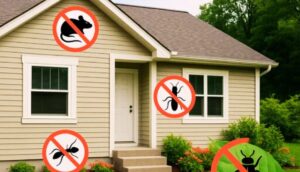



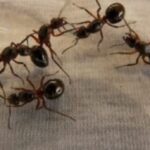

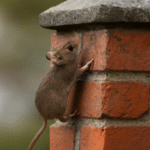
I live in Rhodes, Greece, where cockroaches are a common challenge for me, so I can definitely relate to the importance of managing these annoying pests.
I liked your post as it has given me some practical and good advice for dealing with similar issues. For example, I never thought about sealing entry points and eliminating moisture sources.
I wanted to ask though, are there any tips you would recommend for taking care of cockroaches in Mediterranean climates like mine? Or are the methods similar?
Thank you for the info.
Chris
Hello,
Thanks for stopping by, bascially it is the same practice, sanitation- keeping your indoor and outdoor environment clean and exclusion. Sealing of all entry points because when insects and rodents show up they are in search of water, shelter, food source, and a place to raise their young. If needed insecticides and other control methods may be needed based on the level of infestation to bring control. I hope this helped